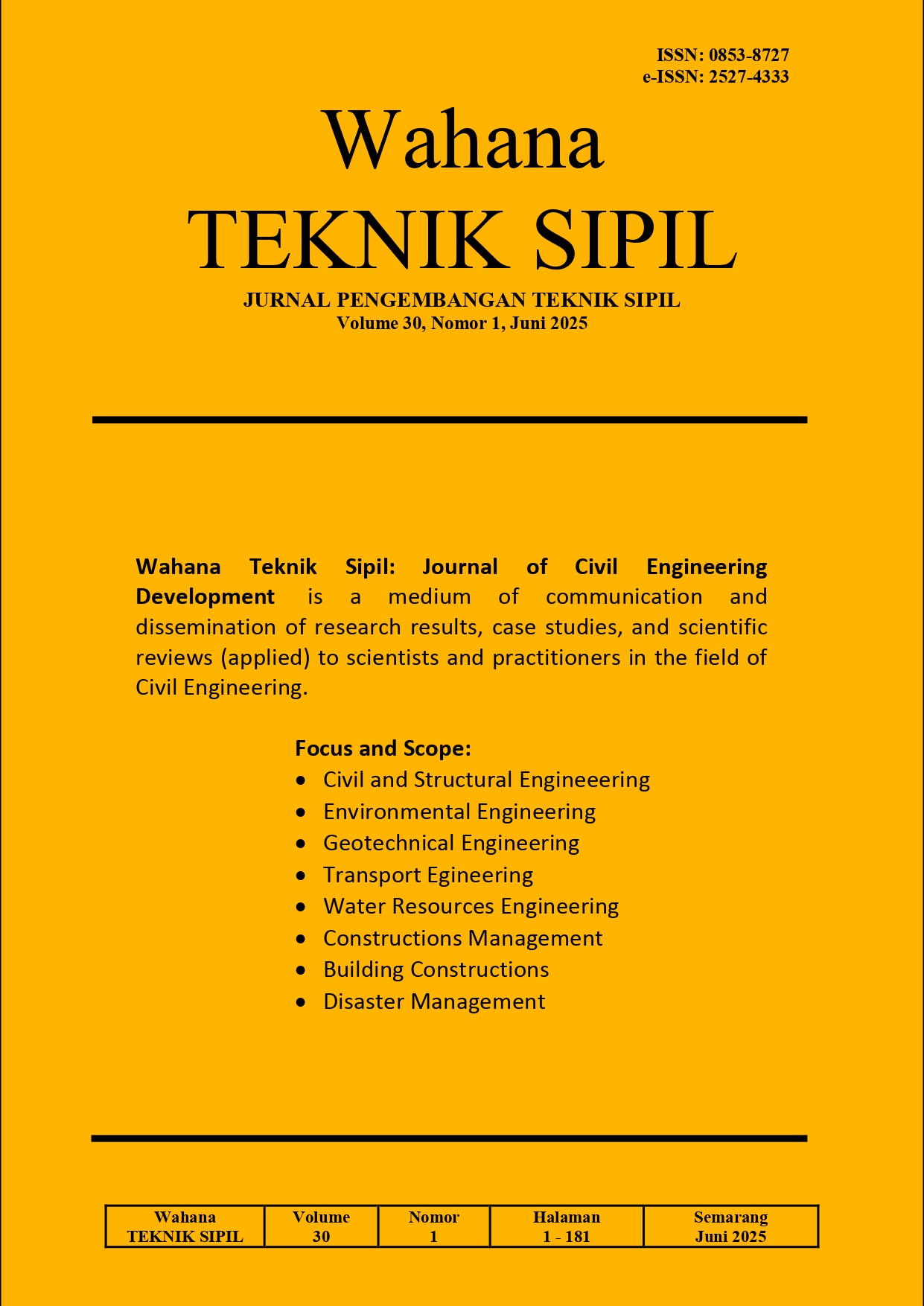STABILISASI TANAH LEMPUNG LUNAK MENGGUNAKAN KALSIT DAN RCC 15 DALAM PENINGKATAN NILAI CBR UNSOAKED
DOI:
https://doi.org/10.32497/wahanats.v30i1.6651Abstract
Soft clay soil, which is often found in coastal and lowland areas of Indonesia, has characteristics such as low bearing capacity, high plasticity, and easy to subside under load, making it a challenge in infrastructure projects. Various soil stabilization methods have been developed, one of which is the use of chemical stabilizers. This study examines the use of Calcite (CaCO3) and Spent Catalyst RCC 15 as stabilization materials to improve the quality of soft clay soil. Calcite is known to reduce plasticity and increase soil bearing capacity, while Spent Catalyst RCC 15, as industrial waste, has the potential to improve soil structure and increase soil stability. Tests were conducted in the laboratory by mixing 6% Calcite and variations of Spent Catalyst RCC 15 (0%, 4%, and 8%) in soil samples from Cililin, West Java. The test results showed that the combination of Calcite and Spent Catalyst RCC 15 significantly increased the California Bearing Ratio (CBR) value of the soil, which means increasing the soil bearing capacity. The higher the percentage of Spent Catalyst RCC 15, the higher the CBR value obtained, indicating the effectiveness of this combination of stabilization materials in improving soft clay soil. These findings indicate the potential for an economical and sustainable solution to address soft clay soil problems in Indonesia and support more environmentally friendly industrial waste management.
Downloads
Published
Issue
Section
License

This work is licensed under a Creative Commons Attribution 4.0 International License.
Authors who publish with this journal agree to the following terms:Authors retain copyright and grant the journal right of first publication with the work simultaneously licensed under a Creative Commons Attribution License that allows others to share the work with an acknowledgement of the work's authorship and initial publication in this journal.
Authors are able to enter into separate, additional contractual arrangements for the non-exclusive distribution of the journal's published version of the work (e.g., post it to an institutional repository or publish it in a book), with an acknowledgement of its initial publication in this journal.
Authors are permitted and encouraged to post their work online (e.g., in institutional repositories or on their website) prior to and during the submission process, as it can lead to productive exchanges, as well as earlier and greater citation of published work (See The Effect of Open Access).






